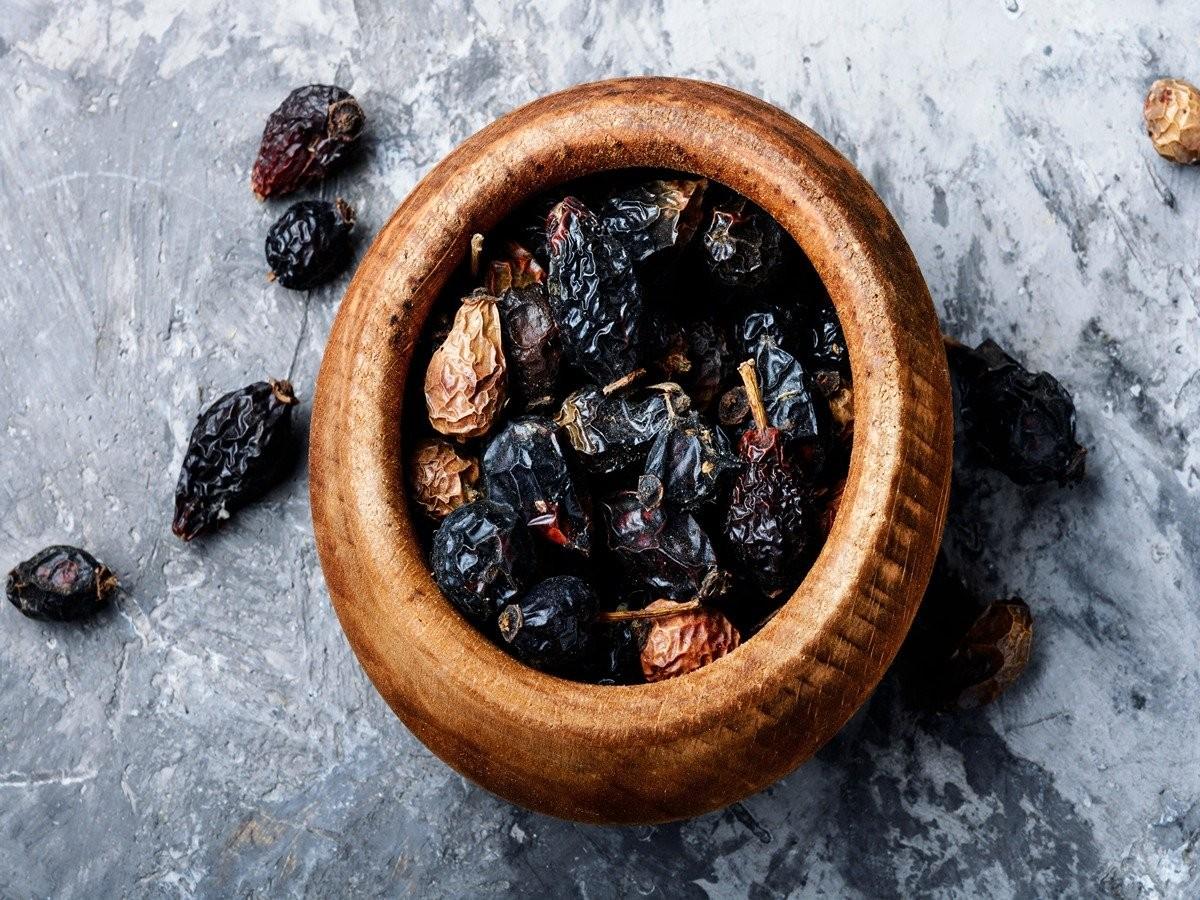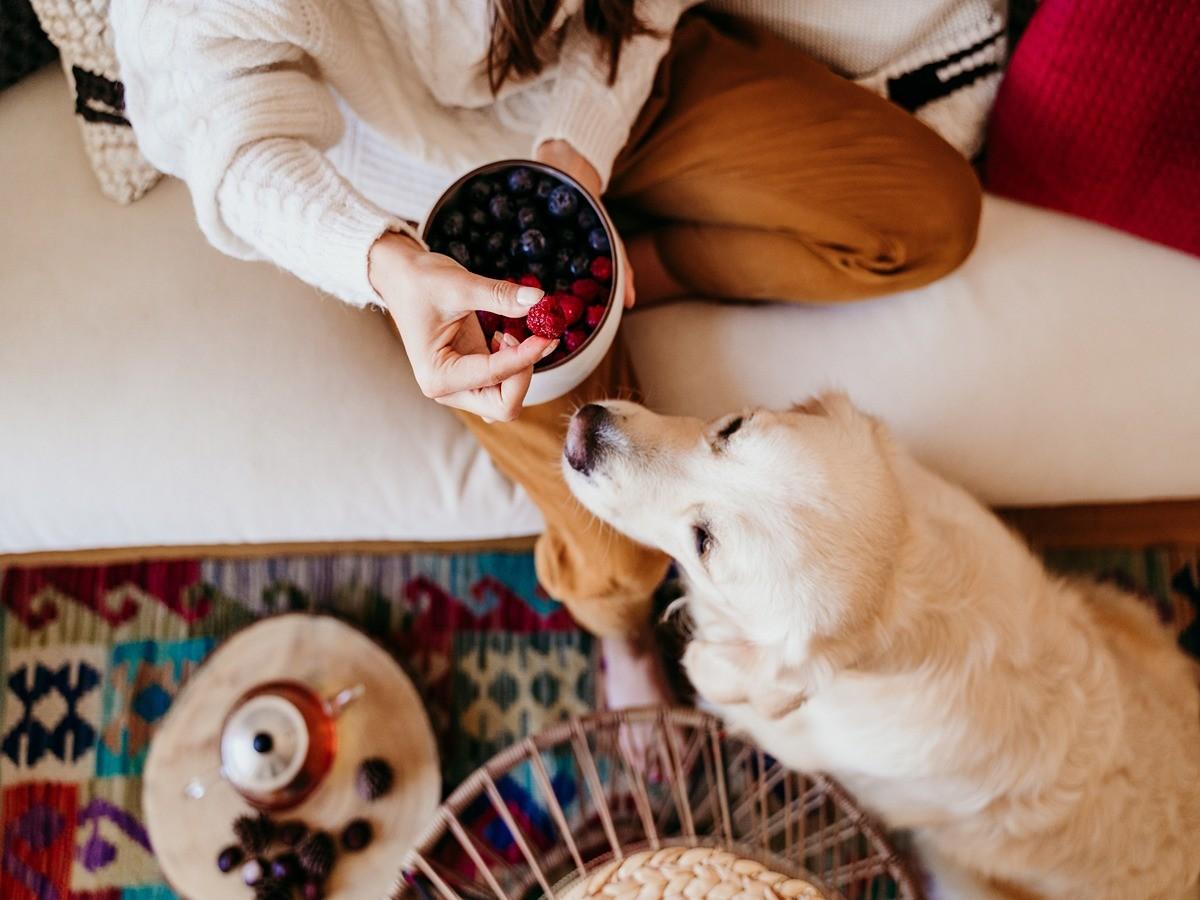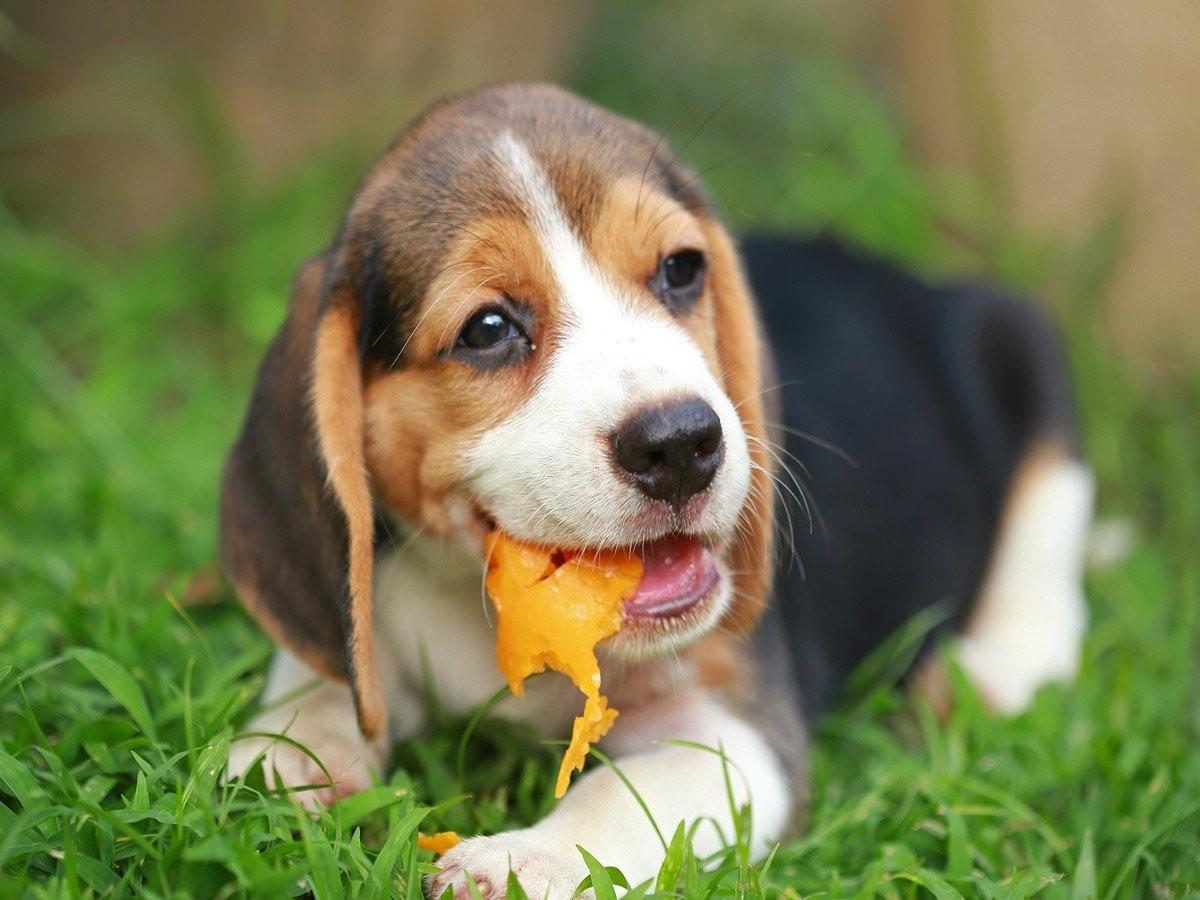Dogs are carnivores and as such, they have a difficult time digesting plant-based food. This means that dried fruits, nuts and seeds are not good for them. While humans can enjoy the health benefits of these foods, dogs can suffer from serious health problems if they eat them. In this article, we will take a look at what dried fruits, nuts and seeds look like, where they come from and why they are toxic to dogs.
Can Dogs Eat Dry Fruits?
Is it Safe for them? These might be the questions that we pet parents usually think of. Worry no more, we’ve got you covered in this article. Dogs should never eat dried fruit because it can be very dangerous for their health. Dried fruit is typically high in sugar and fat, which can cause obesity and other health problems in dogs. In addition, dried fruit can also contain harmful chemicals that can be toxic to dogs. If you’re looking for a healthy treat for your dog, opt for fresh fruit or vegetables instead. If you’re looking to keep dried fruit and nuts away from your dog, the best thing to do is to keep them out of reach. This means putting them up high on shelves or in cupboards where your dog can’t get to them. You should also avoid leaving bowls of nuts or dried fruit sitting around where your dog could easily reach.
A balanced meal is important for dogs because it helps them stay healthy and provides them with the nutrients they need. Dogs typically eat a lot of meat, but they also need vegetables in their diet to stay healthy. Vegetables provide essential vitamins and minerals that dogs need, and they can help keep your dog’s digestive system functioning properly. including vegetables in your dog’s diet is one of the best ways to ensure that they’re getting all the nutrients they need.
There are a few easy ways to add vegetables to your dog’s diet. You can start by adding some chopped veggies to their food bowl or mixing them into their food. You can also try giving them veggie-based treats or offering raw veggies as a snack. If your dog is resistant to eating vegetables, you can also try putting them in a blender and making a veggie puree. With a little creativity, you should be able to find a way to incorporate veggies into your dog’s diet without too much trouble.
Almonds
Almonds are small, oval-shaped nuts that have a hard outer shell. Their inside is a creamy white color and the nut itself has a slightly sweet taste. These nuts are often used in baking and cooking as they add a lovely flavor to food.
Native to the Middle East and North Africa, almonds were first introduced to Europe in the 16th century and then to the United States in the 18th century. Today, almonds are grown all over the world.
Almonds can be eaten raw, roasted or ground up into a flour. They are often used in baking or as a topping on salads and other dishes.
Unfortunately, almonds contain a toxin called amygdalin1, which is poisonous to dogs. When ingested, amygdalin can cause vomiting, diarrhea, abdominal pain, weakness and collapse. If your dog has eaten almonds, it is important to seek veterinary care immediately.
Cashews
Cashews are small, kidney-shaped nuts that have a thin, outer shell. The inside of the cashew is a creamy white color and the nut itself has a sweet taste. Cashews are often used in baking and cooking as they add a lovely flavor to food.
Native to Brazil, cashews were first introduced to Europe in the 16th century and then to the United States in the 18th century. Today, cashews are grown all over the world.
Cashews can be eaten raw, roasted or ground up into a flour. They are often used in baking or as a topping on salads and other dishes.
Unfortunately, cashews contain a toxin called urushiol, which is poisonous to dogs2. When ingested, urushiol can cause vomiting, diarrhea, abdominal pain, weakness and collapse. If your dog has eaten cashews, it is important to seek veterinary care immediately.
Pistachio Nuts
Pistachio nuts are small, greenish-brown nuts that have a hard outer shell. The inside of the pistachio nut is a creamy white color and the nut itself has a slightly sweet taste. Pistachios are often used in baking and cooking as they add a lovely flavor to food.
Native to Asia, pistachio nuts were first introduced to Europe in the 16th century and then to the United States in the 18th century. Today, pistachios are grown all over the world.
Pistachios can be eaten raw, roasted or ground up into a flour. They are often used in baking or as a topping on salads and other dishes.
Unfortunately, pistachio nuts contain a toxin called amygdalin, which is poisonous to dogs1. When ingested, amygdalin can cause vomiting, diarrhea, abdominal pain, weakness and collapse. If your dog has eaten pistachio nuts, it is important to seek veterinary care immediately.
Macadamia Nuts
Macadamia nuts are small, round nuts that have a hard outer shell. The inside of the macadamia nut is a creamy white color and the nut itself has a slightly sweet taste. Macadamia nuts are often used in baking and cooking as they add a lovely flavor to food.
Native to Australia, macadamias were first introduced to Europe in the 19th century and then to the United States in the 20th century. Today, macadamia nuts are grown all over the world.
Macadamia nuts can be eaten raw, roasted or ground up into a flour. They are often used in baking or as a topping on salads and other dishes.
Sadly for dogs, macadamia nuts contain a toxin called macamides, which is poisonous to dogs3. When ingested, macamides can cause vomiting, diarrhea, abdominal pain, weakness and collapse. If your dog has eaten macadamia nuts, it is important to seek veterinary care immediately.
Raisins
Raisins are small, dried grapes that have a dark brown color. They are often used in baking and cooking as they add a lovely sweetness to food.
These shriveled delights are made from grapes that grow on vines. Raisins can be made from any type of grape, but they are most commonly made from Thompson seedless grapes.
Raisins can be eaten raw or used in baking and cooking. They are often used as a topping on salads and other dishes.
Sadly for dogs, raisins contain a toxin called cyanogenic glycosides4, which is poisonous to dogs. When ingested, cyanogenic glycosides can cause vomiting, diarrhea, abdominal pain, weakness and collapse. If your dog has eaten raisins, it is important to seek veterinary care immediately.
Seeds
Seeds are small, dry fruits that contain a single seed. They come in all shapes and sizes and can be any color. Seeds are often used in baking and cooking as they add a lovely crunch to food.
As we know from elementary school science, seeds come from plants. All plants have seeds, which are used to reproduce the plant. Seeds are found inside fruits or in the ground.
Seeds can be eaten raw or roasted. They are often used in baking or as a topping on salads and other dishes.
Regrettably, seeds contain a toxin called cyanogenic glycosides, which is poisonous to dogs4. When ingested, cyanogenic glycosides can cause vomiting, diarrhea, abdominal pain, weakness and collapse. If your dog has eaten seeds, it is important to seek veterinary care immediately.

Dates
Dates are small, brown fruits that grow on palm trees. They have a sweet, chewy texture and are often used in baking and cooking.
These shriveled delights come from date palms, which are native to the Middle East and North Africa. Today, date palms are grown all over the world.
Dates can be eaten raw or used in baking and cooking. They are often used as a topping on salads and other dishes.
Unfortunately, dates contain a toxin called cyanogenic glycosides, which is poisonous to dogs4. When ingested, cyanogenic glycosides can cause vomiting, diarrhea, abdominal pain, weakness and collapse. If your dog has eaten dates, it is important to seek veterinary care immediately.
Figs
Figs are small, soft fruits that have a sweet, juicy flavor. They can be any color, but are most commonly brown or black. Figs are often used in baking and cooking as they add a lovely sweetness to food.
These sweet treats come from fig trees, which are native to the Middle East and North Africa. Today, fig trees are grown all over the world.
Figs can be eaten raw or used in baking and cooking. They are often used as a topping on salads and other dishes.
Sadly, figs contain a toxin called cyanogenic glycosides, which is poisonous to dogs4. When ingested, cyanogenic glycosides can cause vomiting, diarrhea, abdominal pain, weakness and collapse. If your dog has eaten figs, it is important to seek veterinary care immediately.
Currants
Currants are small, black berries that grow on bushes. They have a tart, tangy flavor and are often used in baking and cooking.
Harvested from currant bushes, currants are native to Europe and Asia. Today, currant bushes are grown all over the world.
Currants can be eaten raw or used in baking and cooking. They are often used as a topping on salads and other dishes.
Beware that currants contain a toxin called cyanogenic glycosides, which is poisonous to dogs4. When ingested, cyanogenic glycosides can cause vomiting and diarrhea.
Prunes
Prunes are small, dried fruits that have a sweet, chewy texture. They can be any color, but are most commonly brown or black. Prunes are often used in baking and cooking as they add a lovely sweetness to food.
Harvested come from plums, which are native to Europe and Asia. Today, plums are grown all over the world.
Prunes can be eaten raw or used in baking and cooking. They are often used as a topping on salads and other dishes.
Sadly, prunes contain a toxin called cyanogenic glycosides, which is poisonous to dogs4. When ingested, cyanogenic glycosides can cause vomiting, diarrhea, abdominal pain, weakness and collapse. If your dog has eaten prunes, it is important to seek veterinary care immediately.
Pecans
Pecans are small, brown nuts that have a sweet, buttery flavor. They are often used in baking and cooking as they add a lovely sweetness to food.
Harvested from pecan trees, pecans are native to North America. Today, pecan trees are grown all over the world. Pecans can be eaten raw or used in baking and cooking. They are often used as a topping on salads and other dishes.
Sadly, pecans contain a toxin called cyanogenic glycosides, which is poisonous to dogs4. When ingested, cyanogenic glycosides can cause vomiting, diarrhea, abdominal pain, weakness and collapse. If your dog has eaten pecans, it is important to seek veterinary care immediately.
Walnuts
Walnuts are large, brown nuts that have a sweet, buttery flavor. They are often used in baking and cooking as they add a lovely sweetness to food.
Harvested from walnut trees, which are native to Europe and Asia. Today, walnut trees are grown all over the world. Walnuts can be eaten raw or used in baking and cooking. They are often used as a topping on salads and other dishes.
Sadly, walnuts contain a toxin called cyanogenic glycosides, which is poisonous to dogs4. When ingested, cyanogenic glycosides can cause vomiting, diarrhea, abdominal pain, weakness and collapse. If your dog has eaten walnuts, it is important to seek veterinary care immediately.
Brazil Nuts
Brazil nuts are large, brown nuts that have a sweet, buttery flavor. They are often used in baking and cooking as they add a lovely sweetness to food.
Harvested from Brazil nut trees, which are native to South America. Today, Brazil nut trees are grown all over the world. Brazil nuts can be eaten raw or used in baking and cooking. They are often used as a topping on salads and other dishes.
Unfortunately, brazil nuts contain a toxin called cyanogenic glycosides, which is poisonous to dogs4. When ingested, cyanogenic glycosides can cause vomiting, diarrhea, abdominal pain, weakness and collapse. If your dog has eaten Brazil nuts, it is important to seek veterinary care immediately.
Peanuts
Peanuts are small, brown nuts that have a sweet, buttery flavor. They are often used in baking and cooking as they add a lovely sweetness to food.
Harvested from peanut plants, peanuts are native to South America. Today, peanut plants are grown all over the world. Peanuts can be eaten raw or used in baking and cooking. They are often used as a topping on salads and other dishes.
Sadly, peanuts contain a toxin called cyanogenic glycosides, which is poisonous to dogs4. When ingested, cyanogenic glycosides can cause vomiting, diarrhea, abdominal pain, weakness and collapse. If your dog has eaten peanuts, it is important to seek veterinary care immediately.

How Can Dogs Eat Peanut Butter If Peanuts Are Toxic To Dogs?
Peanut butter is safe for dogs to eat because it does not contain cyanogenic glycosides. Peanut butter is a popular treat for dogs and can be used as a training tool or given as a special treat. If you give your dog peanut butter, make sure to choose a brand that does not contain xylitol, which is toxic to dogs.
Hazelnuts
Hazelnuts are small, brown nuts that have a sweet, buttery flavor. They are often used in baking and cooking as they add a lovely sweetness to food.
Harvested from hazelnut trees, hazelnuts are native to Europe and Asia. Today, hazelnut trees are grown all over the world. Hazelnuts can be eaten raw or used in baking and cooking. They are often used as a topping on salads and other dishes.
Keep in mind that hazelnuts contain a toxin called cyanogenic glycosides, which is poisonous to dogs4. When ingested, cyanogenic glycosides can cause vomiting, diarrhea, abdominal pain, weakness and collapse. If your dog has eaten hazelnuts, it is important to seek veterinary care immediately.
Chestnuts
Chestnuts are small, brown nuts that have a sweet, buttery flavor. They are often used in baking and cooking as they add a lovely sweetness to food.
Harvested from chestnut trees, chestnuts are native to Europe and Asia. Today, chestnut trees are grown all over the world. Chestnuts can be eaten raw or used in baking and cooking. They are often used as a topping on salads and other dishes.
Regrettably, chestnuts contain a toxin called cyanogenic glycosides, which is poisonous to dogs4. When ingested, cyanogenic glycosides can cause vomiting, diarrhea, abdominal pain, weakness and collapse. If your dog has eaten chestnuts, it is important to seek veterinary care immediately.
Pine Nuts
Pine nuts are small, brown nuts that have a sweet, buttery flavor. They are often used in baking and cooking as they add a lovely sweetness to food.
Harvested from pine trees, pine nuts are native to North America. Today, pine trees are grown all over the world. Pine nuts can be eaten raw or used in baking and cooking. They are often used as a topping on salads and other dishes.
Unfortunately, pine nuts contain a toxin called cyanogenic glycosides, which is poisonous to dogs. When ingested, cyanogenic glycosides can cause vomiting, diarrhea, abdominal pain, weakness and collapse. If your dog has eaten pine nuts, it is important to seek veterinary care immediately.
Sunflower Seeds
Sunflower seeds are small, brown seeds that have a sweet, nutty flavor. They are often used in baking and cooking as they add a lovely sweetness to food.
Harvested from sunflowers, which are native to North America. Today, sunflowers are grown all over the world. Sunflower seeds can be eaten raw or used in baking and cooking. They are often used as a topping on salads and other dishes.
Beware that sunflower seeds contain a toxin called cyanogenic glycosides, which is poisonous to dogs4. When ingested, cyanogenic glycosides can cause vomiting, diarrhea, abdominal pain, weakness and collapse. If your dog has eaten sunflower seeds, it is important to seek veterinary care immediately.
Pumpkin Seeds
Pumpkin seeds are small, green seeds that have a sweet, nutty flavor. They are often used in baking and cooking as they add a lovely sweetness to food.
Harvested from pumpkins, pumpkin seeds are native to North America. Today, pumpkins are grown all over the world. Pumpkin seeds can be eaten raw or used in baking and cooking. They are often used as a topping on salads and other dishes.
Danger! Pumpkin seeds contain a toxin called cyanogenic glycosides, which is poisonous to dogs4. When ingested, cyanogenic glycosides can cause vomiting, diarrhea, abdominal pain, weakness and collapse. If your dog has eaten pumpkin seeds, it is important to seek veterinary care immediately.
Dried Apricots
Dried apricots are small, brown fruits that have a sweet, tangy flavor. They are often used in baking and cooking as they add a lovely sweetness to food. Crafted from apricots, which are native to China. Today, apricots are grown all over the world.
This dried fruit can be eaten raw or used in baking and cooking. They are often used as a topping on salads and other dishes.
Dried apricots contain a toxin called cyanogenic glycosides, which is poisonous to dogs4. When ingested, cyanogenic glycosides can cause vomiting, diarrhea, abdominal pain, weakness and collapse. If your dog has eaten dried apricots, it is important to seek veterinary care immediately.
What Other Vegetables Can Your Dog Eat?
Canines can chow down on asparagus, bell peppers, broccoli, carrots, cauliflower and lettuce. Avoid giving your pooche heavily seasoned and fatty foods. Do away with pickles, onions and garlic when feeding pets. Other veggies are considered great sources of fiber and vitamins for dogs.
What Other Fruits Can Your Dog Eat?
There are many fruits that dogs can eat. Expand what goes into your pet’s bowl via bananas, blueberries, oranges, melons, pumpkins, apples, kiwis, dates, cherries, cantaloupes, and papayas. Freeze some bananas for a post-walkies treat.
What Seafood Can Your Dog Eat?
Vary your dog’s sources of protein by including canned tuna, salmon, seaweed, shrimp, crabs, and lobster. Always ensure that seafood is thoroughly cooked before feeding it to your dog.
Which Beans Can Your Dog Eat?
Although dogs are not known to eat beans, you can enjoy green beans, black beans, lima beans, pinto beans, and garbanzo beans. Beans shouldn’t replace meat in a dog’s diet, since the meat they eat is a richer source of proteins.
Dogs shouldn’t eat:
Fava beans
Baked beans
Refried beans
Canned beans
Chili beans
Coffee beans
Raw kidney beans


I've had the privilege of immersing myself in the realm of pet safety. As the owner of an energetic mini golden doodle, I know just how stressful being a pet owner can be. I am dedicated to ensuring our beloved pets enjoy a life brimming with good health.
AKC Staff. "Fruits and Vegetables Dogs Can or Can't Eat." American Kennel Club, 15 Oct. 2025, https://www.akc.org/expert-advice/nutrition/fruits-vegetables-dogs-can-and-cant-eat/.
Turner, Beth. "Safe and Unsafe Nuts and Seeds For Dogs & Cats." Preventive Vet, 09 Sep. 2025, https://www.preventivevet.com/pets/safe-and-unsafe-nuts-and-seeds-for-pets.
Malmanger, Ellen. "What Fruits Can Dogs Eat?" PetMD, 22 Apr. 2025, https://www.petmd.com/dog/nutrition/what-fruits-can-dogs-eat.
Pet Expert Team. "Can Dogs Eat Nuts?" Purina, 28 Jul. 2025, https://www.purina.com/articles/dog/feeding/can-dogs-eat/nuts.
The information presented in this article is for educational and informational purposes only and does not constitute or substitute for the advice of your veterinarian.












